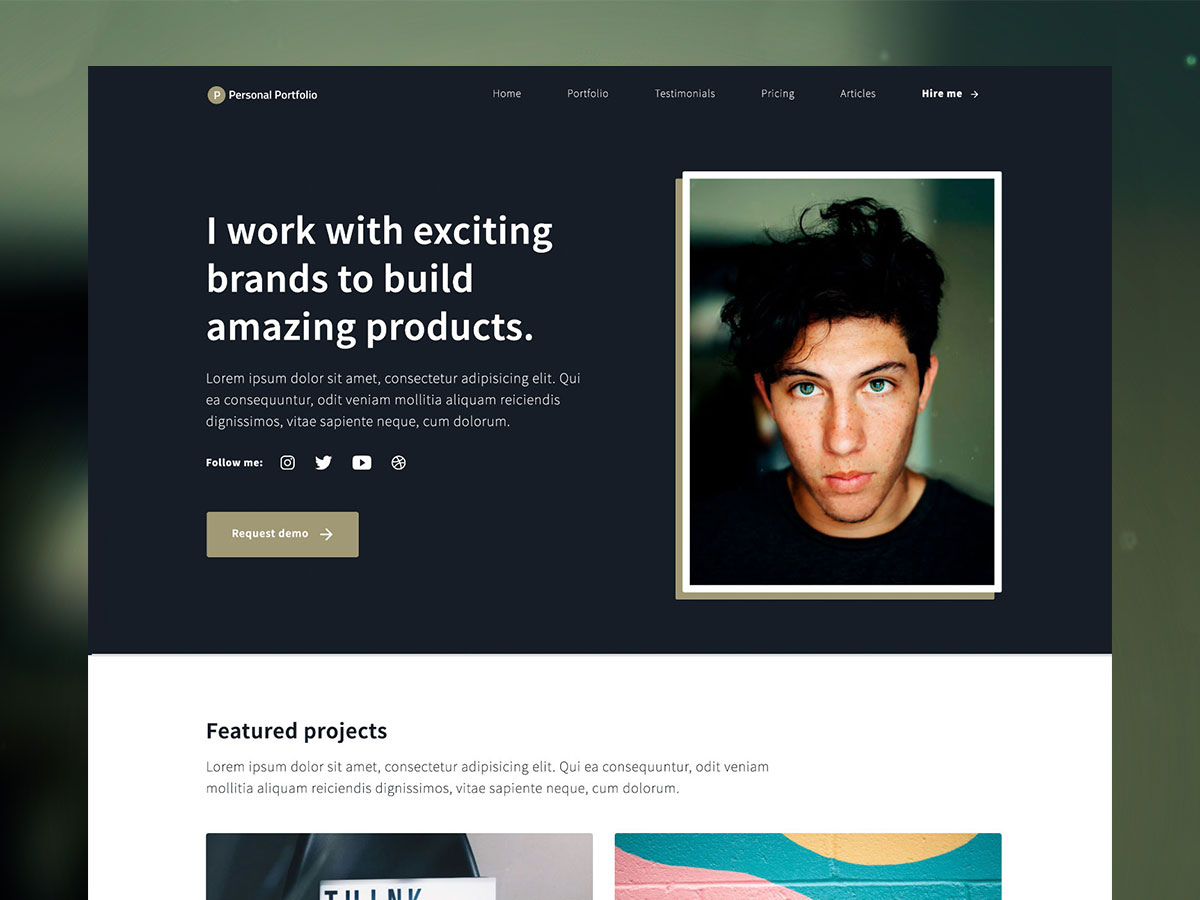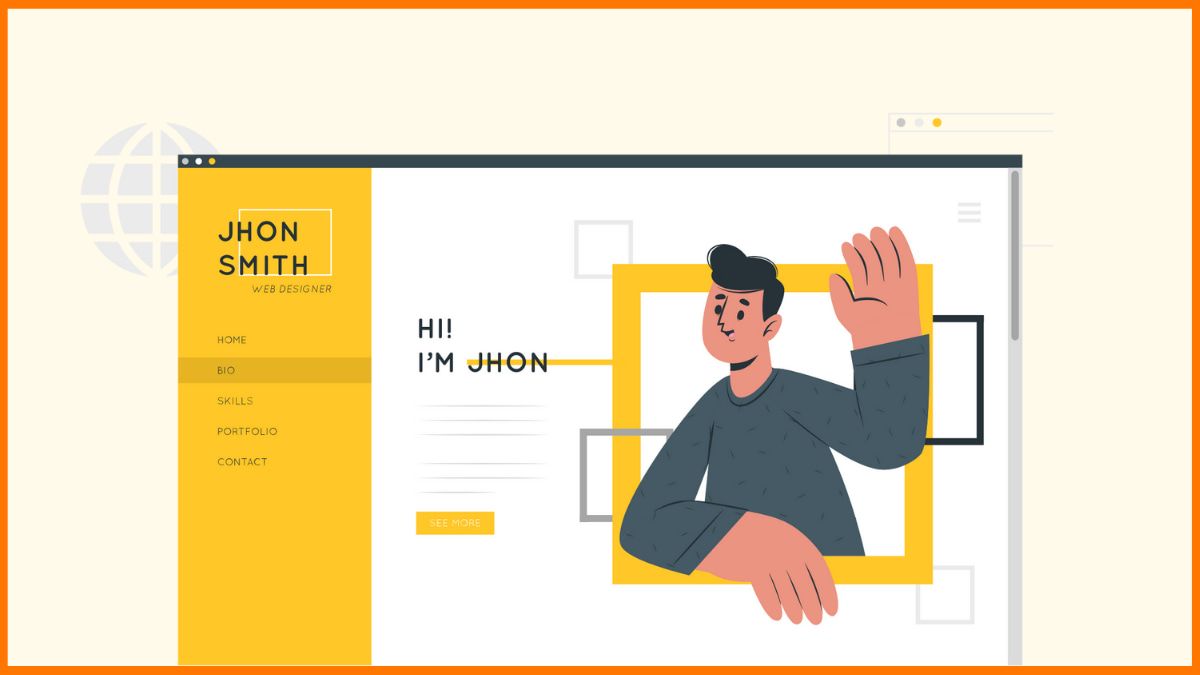Key Takeaway:
Creating a portfolio is important, especially if you are a freelancer or looking to showcase your work in a particular field. It requires careful planning, organization, and attention to detail. Regardless of your niche, when starting as a freelancer your priority is to build a top-notch portfolio.
Why Freelancers Should Build a Portfolio

A portfolio is a collection of your best work that showcases your skills, experience, and expertise in a specific field. It allows potential employers or clients to see what you’re capable of and how you can add value to their projects. Here are five reasons why you should build a top-notch portfolio:
1. Demonstrate Your Skills
A portfolio is a visual representation of your work that allows you to showcase your skills and expertise to potential clients or employers. It provides tangible evidence of your capabilities and helps you stand out in a crowded job market.
2. Build Credibility
Having a portfolio can help you build credibility and establish yourself as a professional in your field. It shows that you have a proven track record of success and that you take your work seriously.
3. Highlight Your Accomplishments
A portfolio allows you to highlight your accomplishments and showcase your best work. This can be especially important if you have a diverse range of skills or work in a highly competitive field.
4. Attract Clients and Employers
A portfolio can help you attract new clients or employers by demonstrating your skills and expertise. It can also help you showcase your brand and stand out from other candidates or freelancers.
5. Showcase Your Edge
A portfolio allows you to showcase your unique skills, experiences, and achievements that set you apart from others in your field. You can provide visual examples of your work, which can be especially important in creative fields such as graphic design, photography, or videography. It allows potential clients or employers to see your work in action and get a better sense of your style and approach.
|
How To Build a Top-Notch Freelancer Portfolio
Step 1: Buy A Domain Name
Buying a domain name can help you establish a professional online presence, build credibility, and improve your branding and marketing efforts. Namecheap is one of the trusted domain providers for freelancers, it gives you full control over your website and potentially be a valuable investment in the long run.
Here’s how buying a domain name can be beneficial for you as a freelancer:
- Establish Your Online Presence: A domain name is a unique address that identifies your website portfolio on the internet. Having your domain name is an essential part of establishing a professional online presence for your brand.
- Build Credibility: A custom domain name (e.g. juancruz.com) can help you build credibility with your target clients. It shows that you are serious about your online presence and that you have invested time and resources into building a professional website.
- Branding: A domain name can be a powerful branding tool. It allows you to create a unique and memorable online identity that reflects your personality and brand values.
- Control: Owning a domain name gives you full control over your website and its content. You can choose the hosting provider, design the website to your liking, and control the branding and marketing efforts.
- SEO: Having a domain name that includes relevant keywords can help improve your search engine rankings and make it easier for potential customers to find you online.
- Investment: A domain name can be a valuable investment, especially if it is a rare or highly sought-after name. Some domain names can sell for millions of dollars, making them a potential source of income for individuals and businesses.

2. Select a Web Hosting Provider
Selecting the right web hosting provider is crucial for ensuring that your portfolio website is accessible, secure, and runs smoothly. Hostinger is the most popular web hosting provider for freelancers who are just starting. Aside from its affordable plans, it is packed with the necessary features to make your portfolio stand out.
Consider these factors when selecting a provider and compare different options to find the one that best fits your needs and budget.
- Reliability: Look for a hosting provider that offers reliable uptime and fast load times. You want your portfolio website to be available to potential clients at all times, without any downtime or slow loading times that can negatively impact user experience.
- Security: Choose a hosting provider that offers strong security measures, including SSL certificates, malware scanning, and regular backups. This helps protect your portfolio website and any sensitive information from potential cyber threats.
- Scalability: Consider a hosting provider that can easily scale as your portfolio website grows. You want to be able to add more content, images, and features to your website without worrying about running out of storage or bandwidth.
- Customer Support: Look for a hosting provider that offers reliable customer support. This is especially important if you are not familiar with web hosting or website development, as you may need help troubleshooting issues or configuring your website.
- Price: Consider the price of the hosting plan and ensure that it fits within your budget. However, don’t sacrifice quality for a lower price, as a cheap hosting plan may not offer the features and security measures you need.

3. Design Your Website Portfolio
Designing your website portfolio requires careful planning, attention to detail, and a focus on showcasing your work in the best possible way. By following these steps, you can create a website portfolio that showcases your skills and expertise, attracts new clients or employers, and helps you stand out in a crowded job market:
- Choose a Platform: There are a variety of website builders you can use to create your portfolio, including WordPress, Squarespace, Wix, and others. Choose a platform that fits your needs and allows you to showcase your work effectively.
- Plan Your Navigation: Plan your website navigation so that it’s easy for visitors to find the information they’re looking for. This may include creating a menu bar that links to different sections of your website, such as your portfolio, about page, and contact information.
- Choose a Layout: Choose a layout that showcases your work in the best possible way. This may include using a grid or gallery-style layout to showcase your images, or a more text-based layout if you’re showcasing written work or case studies.
- Use High-Quality Images: Use high-quality images to showcase your work. This may include using professional photography or taking high-quality photos of your work yourself. Make sure your images are well-lit, and well-composed, and showcase your work in the best possible way.
- Keep Your Design Simple and Clean: Keep your design simple and clean so that it doesn’t distract from your work. Use a consistent color palette and font throughout your website to create a cohesive look and feel.
- Showcase Your Personality and Brand: Your website portfolio is an opportunity to showcase your personality and brand. Make sure your design reflects your style and approach to your work.
- Make Your Website Mobile-Friendly: Make sure your website is mobile-friendly so that visitors can easily access your website on their mobile devices.
Seven Tips To Make A Top-Notch Portfolio
Building a top-notch portfolio as a freelancer is critical to showcase your skills and attracting potential clients. By following these tips, you can create a top-notch portfolio that showcases your skills, expertise, and professionalism, and helps you stand out as a freelancer in a competitive market.
1. Determine Your Target Clients
Identify the types of clients you want to work with and tailor your portfolio to showcase the services you offer and the problems you solve for them. Create detailed profiles of your ideal clients, including their demographics, behavior, and pain points. This will help you understand your target clients on a deeper level and create targeted marketing messages.
It’s also helpful to research your competitors to understand their target clients, marketing strategies, and unique selling propositions. Take advantage by identifying gaps in the market and differentiate yourself from your competitors.
2. Select Your Best Work
Choose your best work to feature in your portfolio. Include a mix of projects that showcase your skills and demonstrate your ability to solve problems for your clients. Showcase a range of work that demonstrates your skills and versatility. Include projects that demonstrate different styles, techniques, and mediums.
Select work that is relevant to your target clients. For example, if you specialize in web design for small businesses, include projects that showcase your ability to create user-friendly websites for that market.
3. Show the Process
Create detailed case studies that walk through your process from start to finish, highlighting the challenges you faced and how you overcame them. Include information on your process, including your approach to problem-solving, your methods of communication, and the steps you take to deliver a project from start to finish.
By including the process of your work in your portfolio, you can demonstrate your unique approach to problem-solving and differentiate yourself from other creatives in your field.
4. Include Testimonials
Testimonials in your portfolio help you build trust with potential clients and demonstrate your track record of success. Incorporate testimonials from previous clients that highlight your skills and professionalism. This social proof can be powerful in building trust with potential clients.
Choose testimonials that highlight specific results or outcomes that you helped your clients achieve. For example, a testimonial that says “Thanks to your designs, our website traffic increased by 50%” is more impactful than a generic testimonial that simply says “Great work!”
5. Keep it Simple and Clear
Keep your portfolio simple and easy to navigate. Avoid clutter such as too many colors, fonts, or graphics that can be distracting, and focus on providing clear and concise information that showcases your skills and experience. Use a clean and consistent design for your portfolio to make it easy to navigate and understand.
Test your portfolio on a variety of devices and screen sizes to ensure that it is easy to navigate and read. Ask friends or colleagues to give you feedback on the clarity and simplicity of your portfolio.
6. Use Visuals
Use high-quality images to showcase your work, whether it’s photos of your designs or screenshots of your digital work. Make sure the images are clear, and crisp, and show your work in the best possible light.
It is important to use visuals such as images, videos, and graphics to showcase your work and make your portfolio visually appealing. Use captions to provide context for your visuals, explaining what each image or video represents and how it showcases your work. This can help grab the attention of potential clients and make your work more memorable.
7. Keep it Updated
The market and industry trends change rapidly, and keeping your portfolio updated can help you stay relevant and competitive. By showcasing your latest skills and expertise, you can demonstrate that you are up-to-date with the latest trends and technologies.
Updating your portfolio allows you to highlight your best work and remove outdated or irrelevant pieces. This can help potential clients understand your skills and strengths and make it easier for them to decide if you are a good fit for their project.
Here Is Your Next Step
Reach out to potential clients, attend networking events, and optimize your website to showcase your skills and expertise. By promoting your portfolio effectively, you can attract new clients and grow your freelance business. Optimize your website for search engines by using relevant keywords and meta tags. This can help potential clients find your portfolio when they search for freelancers in your niche.
The key to promoting your portfolio is to be proactive and strategic. Winning clients is a different skill, as a freelancer, you need a combination of strong marketing skills, excellent communication, and a commitment to delivering exceptional work and impressing your clients. Here is how to win your clients and build a successful freelance business.
Frequently Asked Questions About Building A Portfolio
What should be included in a portfolio?
A portfolio should showcase your best work and demonstrate your expertise in your field. It should include a brief introduction, a list of services you offer, and examples of your work. Your portfolio should also be easy to navigate and visually appealing.
What format should my portfolio be in?
Your portfolio can be in a variety of formats, including a website, PDF, or physical book. Consider your target audience and the type of work you do when choosing the format for your portfolio.
How many pieces should I include in my portfolio?
The number of pieces you include in your portfolio will depend on the type of work you do and the length of your career. As a general rule, aim to include 10-15 pieces that showcase your best work and highlight your strengths.
How do I choose which pieces to include in my portfolio?
Choose pieces that best represent your work and highlight your strengths. Consider including a variety of projects that showcase your range of skills and experience.
Should I include client work in my portfolio?
Yes, including client work in your portfolio can help demonstrate your expertise and show potential clients that you have experience working with clients in their industry.
How often should I update my portfolio?
Your portfolio should be updated regularly to reflect your latest work and accomplishments. Consider updating your portfolio every six months to a year.
Can I use my portfolio to apply for jobs or pitch to clients?
Yes, your portfolio can be used to apply for jobs or pitch to clients. Make sure your portfolio is tailored to the job or client you’re applying to and highlights your relevant skills and experience.
